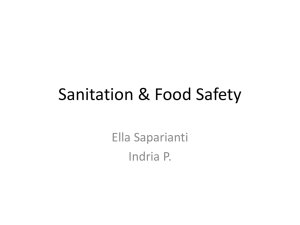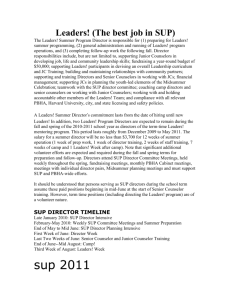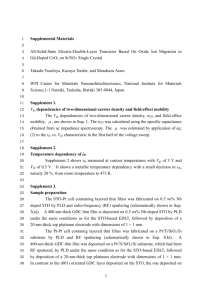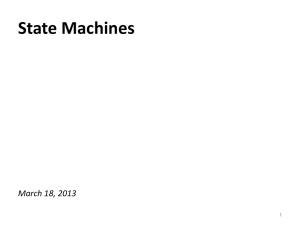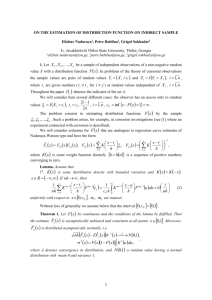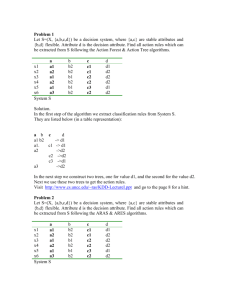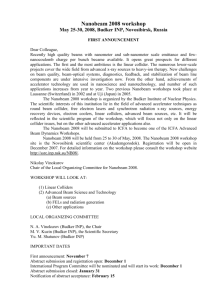5 - Human Services Research Institute
advertisement
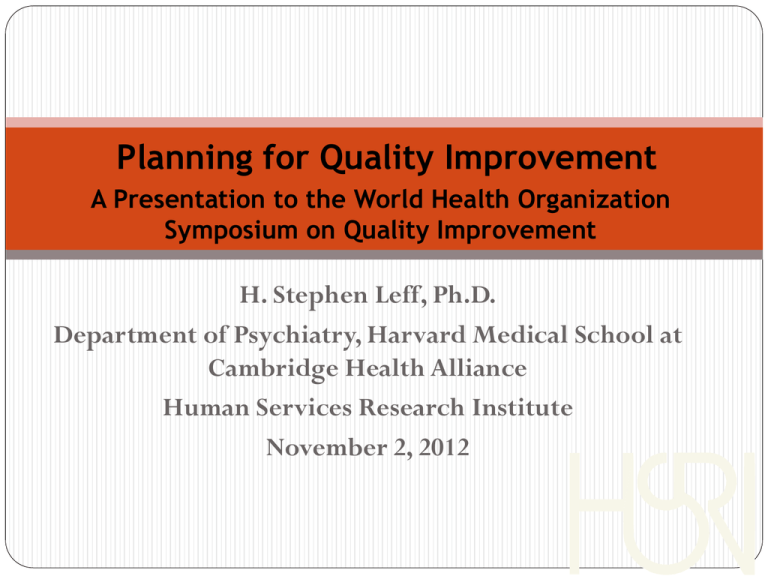
Planning for Quality Improvement A Presentation to the World Health Organization Symposium on Quality Improvement H. Stephen Leff, Ph.D. Department of Psychiatry, Harvard Medical School at Cambridge Health Alliance Human Services Research Institute November 2, 2012 World Health Organization Planning Guidance Package – A useful introduction to mental health planning http://www.who.int/mental_health/policy/en/policy_plans_revision.pdf Visions must be translated into plans with specific and quantitative goals and objectives, strategies, targets and related quality improvement processes Stakeholders experience and may be responsible for different aspects of quality in different contexts A Policy Ecology of Implementation. Raghavan, R., C. L. Bright, et al. (2008). "Toward a policy ecology of implementation of evidence-based practices in public mental health settings." Implement Sci 3: 26 질 What 향상Is Quality: Improving quality animation Quality Improvement: Outcomes Is Moved into Desired Range and Variability Minimized Acceptable Variability; Outcomes Is Moved into Desired Range Quality Improvement Is a Process: Common Representation of Continuous Quality Improvement Process (PDCA) 소비자/환자 질 향상 현실적 목표 정책 욕구사정 이용 가능한 자원 정신보건서비스 지침 시스템 모니터링 욕구충족 성과 The Importance of Planning to Quality Improvement according to the World Health Organization To be effective, a vision needs “a detailed plan so that…[it] can be implemented in a systematic and well-coordinated way.” “PLAN:” Quality improvement provides the arrows, A high quality plan provides the target; Several arrows indicate different quality improvement practices for different contexts Mental Health System Planning: Like Putting Puzzle Pieces Together 정책 Planning Begins with System Participants (Stakeholders) Identifying Goals and Values Quality Begins and Ends with Consumer: Example of a Functional Level Scale For Needs Assessment 기능수준 Another Example of a Functional Level Scale For Needs Assessment: Global Assessment of Functioning Scale Example of Instrument for Translating Functional Levels into Service Needs - 서비스 계획 및 평가 조사 Service Planning and Evaluation Survey (SPES) 기능수준 Clie nt ID: Date : Rate r Name : RAFLS Rating DMH Are a Nat Svc Are a RAFLS Rating (A) Se rvice Compone nt (B) Se rvice Unit (C) Se rvice s Clie nt Should Ide ally Re ce ive (Units/Mo.) (D) Units Actually Provide d to Clie nt Use Code s liste d on instruction she e t (E) Re asons for Discre pancie s Be twe e n Columns C & D Re ason Code s (Column E) Hospital 정 신 보 건 서 비 스 If amount received was less than the ideal: 1. Acute Inp atient day s 1. C 1. D 1. E 2. Intermediate Inp atient day s 2. C 2. D 2. E 1. Service does not exist 3. Extended Inp atient day s 3. C 3. D 3. E 2. Service has insufficient capacit y 3. Client was refused for behavioral reasons 4. Inp atient Detoxification day s 4. C 4. D 4. E day s 5. C 5. D 5. E 4. Inabilit y t o pay 5. Inp atient Forensic Evaluation 5. Accessibilit y problem Re side ntial 6. Language or cult ural problem 7. Client refused service 6. Forensic Residential day s 6. C 6. D 6. E 7. 8-16 Hour Residential 8. 24 Hour Intensive Staff Sup ervision day s 7. C 7. D 7. E day s 8. C 8. D 8. E 9. Intensive Staff/ Sup ervision 10. M oderate Staff/ Sup ervision 11. M inimum Staff/ Sup ervision day s 9. C 9. D 9. E 9. Clinician decided service should not be provided day s 10. C 10. D 10. E 10. Ot her reason not list ed above day s 11. C 11. D 11. E 12. Sup p orted Housing 13. Indep endent Living w/Housing Subsidy 14. Indep . Living w/o Subsidized Housing day s 12. C 12. D 12. E day s 13. C 13. D 13. E 11. Service subst it ut e for ideal service day s 14. C 14 D. 14 E. 12. Clinician decided service should be provided 15. Sp ecialized Residential day s 15. C 15. D 15. E day s 16. C 16. D 16. E day s 17. C 17. D 17. E 16. Nursing Homes w/M H Cap acity 17. Substance Abuse Residential 8. Family/ot her request If amount received was more than the ideal: 13. Client request ed service be provided 14. Family request ed service be provided 15. Ot her reason no list ed above Another Example of Instrument for Assessing Service Needs: The Camberwell assessment of needs (욕구사정 ) short appraisal schedule 정 신 보 건 서 비 스 An Example of an Instrument for Measuring Services and Unit Costs 서비스 비용 정 신 보 건 서 비 스 Monitoring Transitions Between States: Particularly Useful Way to Measure Outcomes for Planning - 성과 Functional Level 3 기능수준 Receive service 정신보건서비스 근거기반실천 / 근거기반진료 EbP System Current System FL1 FL2 FL3 FL4 FL5 5 10 65 15 5 FL6 FL1 FL2 FL3 FL4 FL5 FL6 10 60 20 5 5 Transition probabilities (추이확률) Computer Simulation Makes It Possible to Project Service Utilization, Outcomes, Service and System Costs Over Time 역동적 시뮬레이션 모델 서비스 비용 이용 가능한 전체 자원 정신보건서비스 성과 기능수준 시점 시점 • C Examples of Plan Results Produced by Simulation 근거기반실천 / 근거중심진료 정신보건서비스 “CHECK:” Monitoring System Performance – “Vital for Improving…” 국가정신보건정책과 계획에 대한 주의 깊은 모니터링과 평가는 서비스, 치료, 관리수준을 향상시키고 미래의 정책방향을 제시하기 위해 필수적인 것이다. 세계보건기구 Comparing Observed (“DO”) to Planned Results Starts the PDCA Quality Improvement Cycle Again 시스템 모니터링 : 욕구충족 정신보건서비스 Less Residential Treatment than planned Less Rehabilitation than planned 50% 45% 40% 35% 30% 25% 20% 15% 10% 5% 0% 45% 35% 30% 15% 10% 20% 15% 20% Plan Check 5% 5% More Hospital than planned More treatment than planned. The Link Between “Change Plan” and “Do:” Training Change Plan 훈련 (Training) Act Check Do



